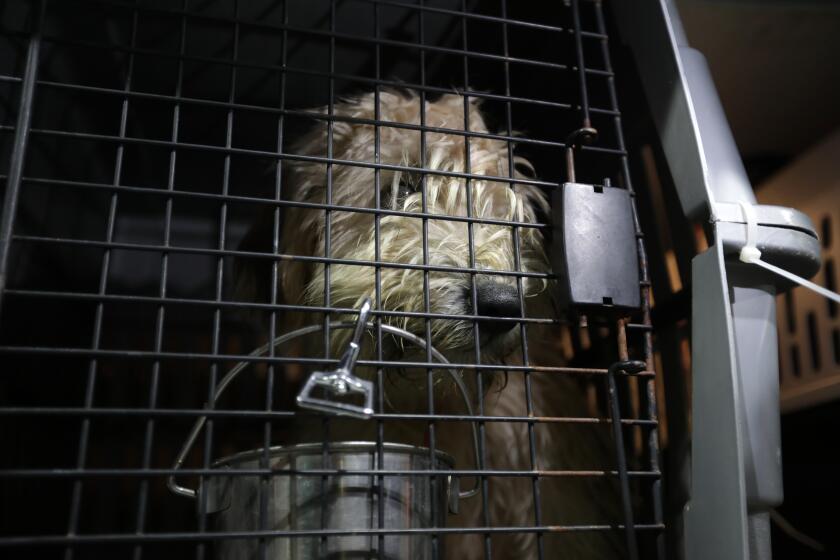Firefighting foam leaves toxic legacy in Californians’ drinking water

SACRAMENTO — It was a Sunday tradition at Bethany Slavic Missionary Church. After morning services, Florin Ciuriuc joined the line of worshipers waiting to fill their jugs with gallons of free drinking water from a well on the property, a practice church leaders had encouraged.
“I take it for my office every week,” said Ciuriuc, a 50-year-old Romanian immigrant and a founding member of the largely Russian-speaking church, which claims 7,000 congregants.
Church leaders boasted it was the cleanest water in Sacramento, according to Ciuriuc. In fact, test results showed the water contained toxic chemicals from firefighting foam used for decades on a now-shuttered Air Force base a mile away. Church leaders say they did not understand their well was contaminated.
The church’s well is one of thousands of water sources located on and near military bases polluted with chemicals from the foam, which was used by the armed services since the 1960s.
Defense Department officials know that the chemicals, called per- and polyfluoroalkyl substances, or PFAS, have seeped into the groundwater underneath nearly two dozen military bases throughout the state. But the department has conducted only limited testing off base and cannot say how many civilian water sources they’ve polluted or who will pay for it.
Since 2016, when the Environmental Protection Agency classified PFAS as an “emerging contaminant” linked to liver cancer and other health problems, the Pentagon has found the pollutants at levels above federal health guidelines in soil and groundwater at more than 90 bases nationwide.

California has the most of any state, with contamination at 21 bases, including six where the chemicals threaten the water supply in nearby communities, according to a review of hundreds of pages of Defense Department records by the Los Angeles Times.
In Riverside County, Barstow, Orange County and Sacramento, PFAS have been detected in private wells or public water systems outside the boundaries of military installations, records show.
At Joint Forces Training Base in Los Alamitos and Fresno Air National Guard Base, the chemicals are suspected of moving into the community water supply.
One military contractor warned in September that residents “using groundwater for drinking water” near Los Alamitos “may potentially be exposed to migrating PFAS contamination.” Another contractor said in March that five wells west of the Fresno airfield could be affected.
But the Pentagon has not completed off-base testing at either location, and at other California bases, leaving the full extent of the contamination unknown.
The Pentagon faces the prospect of a gigantic environmental cleanup that officials estimate could cost in excess of $2 billion and take decades to complete. The day Defense Secretary Mark Esper took office in July, he appointed a task force to oversee the Pentagon response.
Wherever they have already found PFAS in drinking water above the EPA health advisory level of 70 parts per trillion, the military has supplied bottled water, paid for filters and purchased clean water for both military personnel and civilians, officials say.

“Our first priority is to cut off human exposure, and everywhere we’ve identified that someone’s drinking water is above the EPA health advisory level, we are doing everything we can to provide alternative drinking water,” Maureen Sullivan, deputy assistant secretary of defense for environment, said in an interview.
Citing limited funds from Congress for cleanup and testing, the Defense Department only acts when water sampling finds contamination levels above EPA health advisory level for two of the most common variations of PFAS.
The threshold, which was set in 2016, is nonbinding, and officials in several states have set much more stringent standards. Congress is currently debating whether to force the Trump administration to adopt an enforceable nationwide standard, a proposal the White House has said it opposes.
California regulators have few legal tools to force the Pentagon to expand its sampling to groundwater near bases.
“We’re doing everything we can to compel the owner, the Department of Defense, to conduct the investigations, to show us it’s not a problem,” said Doug Smith, assistant executive officer with Lahontan Regional Water Quality Control Board, which monitors groundwater at seven California bases.
According to the Public Policy Institute of California, a nonpartisan research organization, about 85% of Californians depend on groundwater for some portion of their water supply.
Regulators and environmental groups warn that the slow pace of Pentagon testing has left an unknown number of people drinking contaminated water.
“The PFAS plumes are spreading near these military bases, and DOD is turning a blind eye,” said Jane Williams, executive director of California Communities Against Toxics, an environmental group that has pushed for more stringent PFAS cleanup standards.
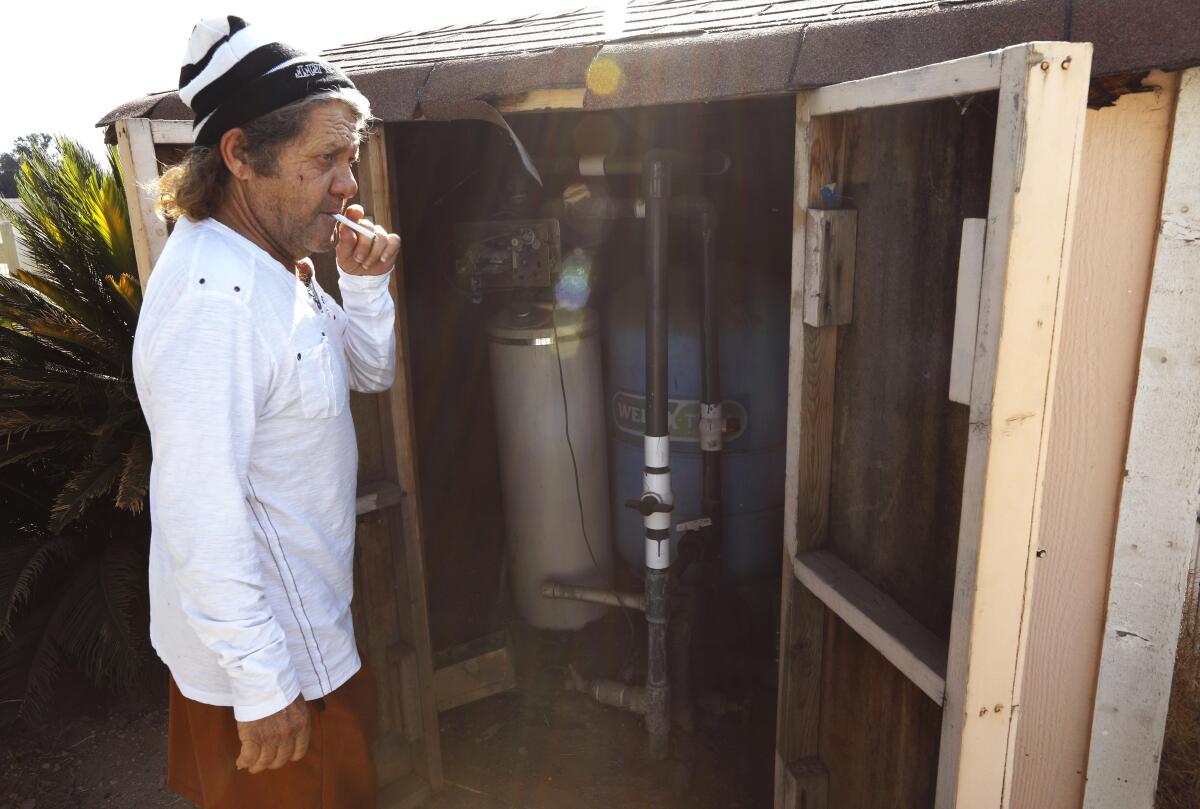
‘Forever chemicals’ spread
Nationwide, the chemicals have been found at 401 current and former military bases. When testing was conducted off-base, the pollutants were found in 1 in 4 wells and water systems, according to a 2018 Pentagon report to Congress.
Among them is the well at Ruben Mendez’s home in the Inland Empire.
Mendez said he had no reason to think something was wrong with his well water until Air Force officials knocked on his door a few years ago.
“They said, ‘We spilled something, and you need to stop drinking the water for a while,’” Mendez said in an interview on the front porch of his peach-colored home.
In 1993, when the Mendez family built the ranch-style home that Ruben, 64, and his 91-year-old mother now share, they settled on property about a mile southeast of March Air Reserve Base. They had a private well dug more than 400 feet down, and for years authorities came every few months to test the water. Mendez said he attributed these visits to his home’s proximity to the base.

In 2016, after the EPA set its health advisory, officials abruptly told the Mendezes and another family nearby to stop drinking the water.
“We thought we had nice, clean water,” Mendez said.
At that point, the Air Force “immediately contacted the two private well owners, provided them with bottled water and advised them not to use the well for any consumption purposes,” Air Force spokesman Mark Kinkade said.
The Air Force delivered free five-gallon jugs of water to the Mendez home for more than two years. In 2018, it paid to have the house connected to the municipal water system. Ruben Mendez said he now pays $100 a month for water he used to get for free.
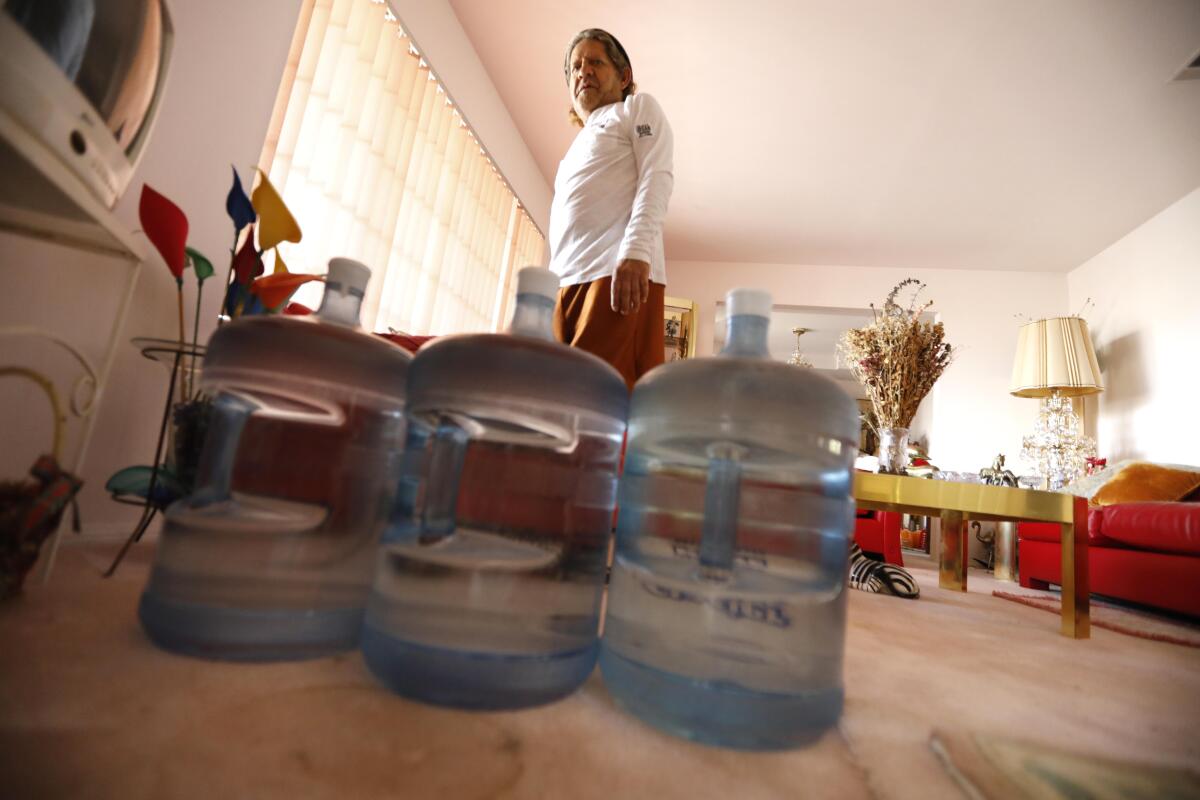
The toxic plume that spread from the base has also made its way into the public drinking-water system.
The Eastern Municipal Water District, which supplies a swath of the Inland Empire that is home to some 825,000 people — from Temecula to Moreno Valley and Perris to Hemet — closed one of its large supply wells in 2016 when the EPA set its new health advisory level for the chemicals.
“We took that well out of service the same day,” said Lanaya Alexander, the water district’s senior director of water resources planning.
But the chemicals had spread further south. In February, after a second well tested above California’s notification level, the district shut it down too.
An emerging health threat
Often referred to as “forever chemicals,” PFAS can persist indefinitely in the ground and water, be absorbed into people’s blood and accumulate in their bodies for years.
Some states and public health advocates say PFAS are harmful at much lower levels than the federal health advisory level of 70 parts per trillion. California requires state regulators to be notified at levels as low as 5.1 parts per trillion.
In January, a new state law will mandate that customers be told if any of the chemicals are detected.
Contamination from these chemicals come from many sources, not just aircraft foam. They were widely used in commercial products like nonstick pans, waterproof clothing and food packaging.
In Southern California, a major source of the pollutants is believed to be chrome-plating factories.
Most vulnerable are mothers and young children, whose reproductive and developmental health can be altered by even tiny amounts of the chemicals being passed to fetuses during pregnancy and to nursing infants through breast milk.
Since only small amounts can be absorbed through the skin, the greatest risk of exposure is from drinking contaminated water.
Firefighting foam is considered a major contributor to the contamination, because it contains high concentrations of PFAS. Developed by the Navy and 3M Co., the chemicals create a film that cools burning aircraft fuel and blankets flammable vapors.
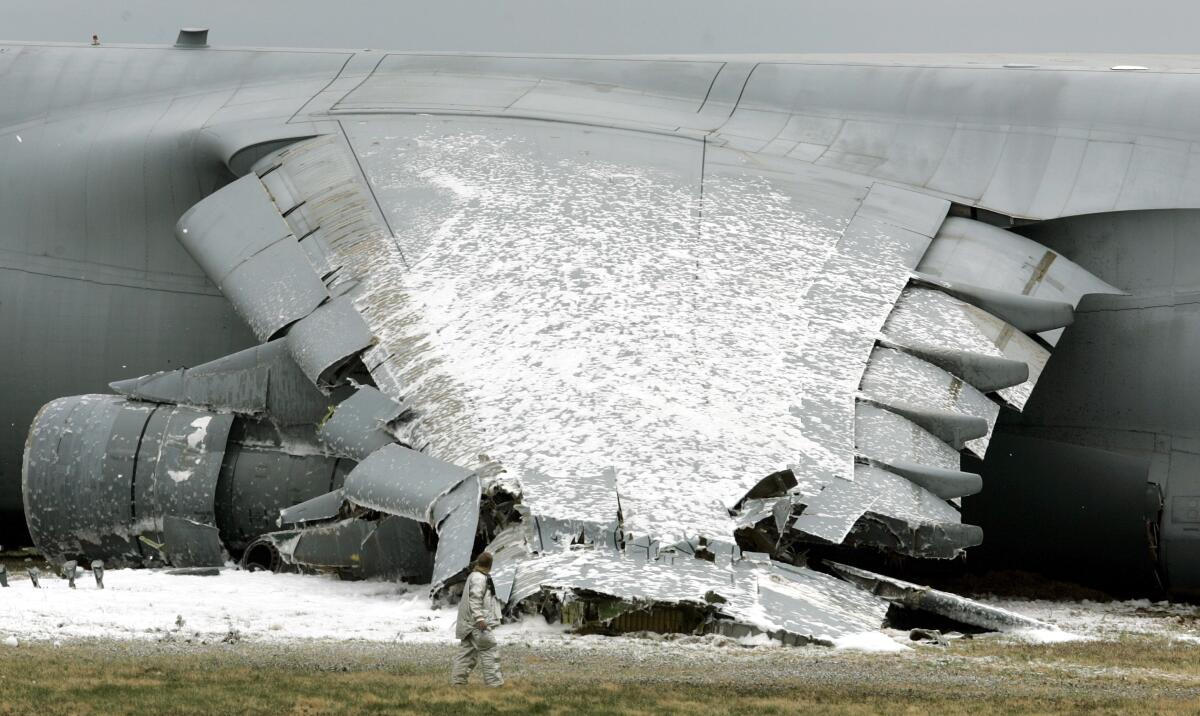
Because of concerns about PFAS contamination, the Pentagon promised in 2016, after the EPA issued its health advisory, that it would phase out use of the foam. It has halted its use in training, but continues to apply it in aircraft fires.
Outrage over PFAS contamination has been building in the Midwest and on the East Coast for years, where companies like 3M, DuPont and its spin-off, the Chemours Co., which made the chemicals, have sought to downplay their health risks.
New Hampshire has set some of the toughest PFAS drinking-water limits in the country. Pennsylvania has tested the blood of residents in heavily-affected areas to measure their exposure. New Mexico’s attorney general sued the Air Force this year to compel the military to pay for the cleanup of two contaminated bases.
But in California, which state regulators say does not have any companies that manufactured PFAS, the scope of the contamination is only beginning to be understood.
California regulators have launched a multi-part investigation, focusing first on more than 600 drinking-water wells located within one or two miles of commercial airports and municipal landfills, where discarded household items release the chemicals.
They plan to widen their search in the coming months, sampling water from wells near military bases and manufacturing plants.
“We’re going to take it case by case,” said Dan Newton of the state Water Resources Control Board. “Where we find hot spots, we may chase those out further to identify plumes or areas of concern.”
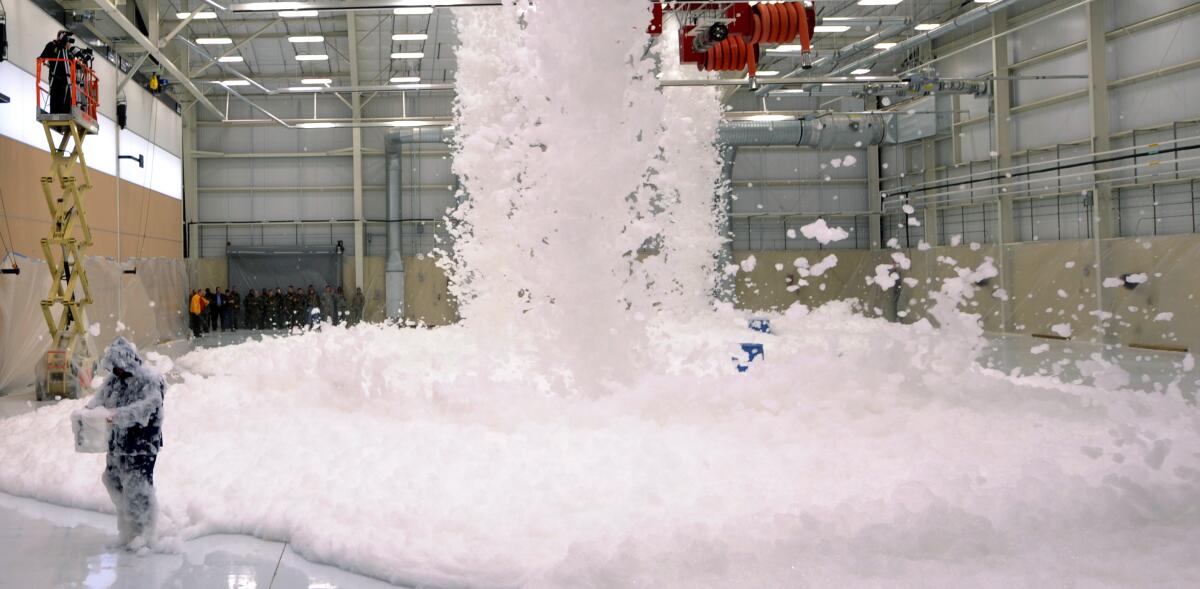
High levels found, but not enough testing
One of the California bases with the highest levels of on-base contamination, Edwards Air Force Base, has carried out little testing off-site.
A vast aircraft testing facility in the high desert north of Lancaster, Edwards has 24 contaminated sites where firefighting foam was sprayed heavily.
At a training site where firefighters practiced dousing flames with the toxic foam, the contamination level in soil samples reached 18,000 parts per trillion, more than 250 times higher than the EPA threshold, according to a contractor’s 2018 report to the Air Force.
Tests of the base’s drinking water did not show high readings. Still, the environmental testing company hired by the military called for further investigation into whether chemicals from the foam were leaching into the groundwater, noting at least “39 off-base water supply wells are within a 4-mile radius” of a contaminated site at Edwards.
Federal and state regulators agreed that more testing was necessary.
In March, the EPA complained in an email to base authorities that while the base was conducting limited testing, it had made “no commitment to ensure the nature and extent of … PFAS contamination is investigated.”
California’s Department of Toxic Substances Control recommended in a July 22 letter to base officials that the Air Force expand its testing to include off-base wells.
Sanford Nax, a spokesman for the agency, acknowledged that regulators were concerned about “the limited nature of the sampling.”
The Air Force is preparing to do further on-base testing next month near the base’s northern boundary, it said in a statement. None of the 24 contaminated sites found at the base to date “are in close proximity to any on-base or off-base drinking water wells,” it said.
If future sampling finds contaminated drinking water that exceeds the EPA recommended level, “we will immediately provide alternate drinking water to impacted residences and facilities and begin working with the community and state regulators,” the statement added.
Other bases have even higher PFAS contamination.
At China Lake Naval Air Weapons Station, a massive Navy testing facility and airfield near Ridgecrest, groundwater samples in 2017 turned up PFAS levels of 8 million parts per trillion, the highest in California.
Sampling in 2017 at Naval Base Ventura County found PFAS contamination of 1.08 million parts per trillion.
And near San Francisco, at Naval Air Station Alameda, the levels reached 336,000 parts per trillion, while at Marine Corps Air Station Tustin, a shuttered base in Orange County, samples were as high as 770,000 parts per trillion.
Recently released Pentagon documents obtained through a public records request by the Environmental Working Group, an environmental advocacy group, showed three more bases in California with elevated contamination levels.
They include Joint Forces Training Base, a California National Guard airfield in Los Alamitos, and Ft. Hunter Liggett, an Army training base in southern Monterey County. The third, Sierra Army Depot, a military storage facility, is located north of Lake Tahoe.
Although the military has tested on-base at all of the facilities, their response to the spreading of the contaminants to off-base drinking supplies has been spottier.
California regulators say there is little they can do to speed up the military’s testing or cleanup efforts around its contaminated bases. Because the EPA has delayed setting a standard for cleaning up groundwater contamination, the military has avoided large-scale remediation costs.
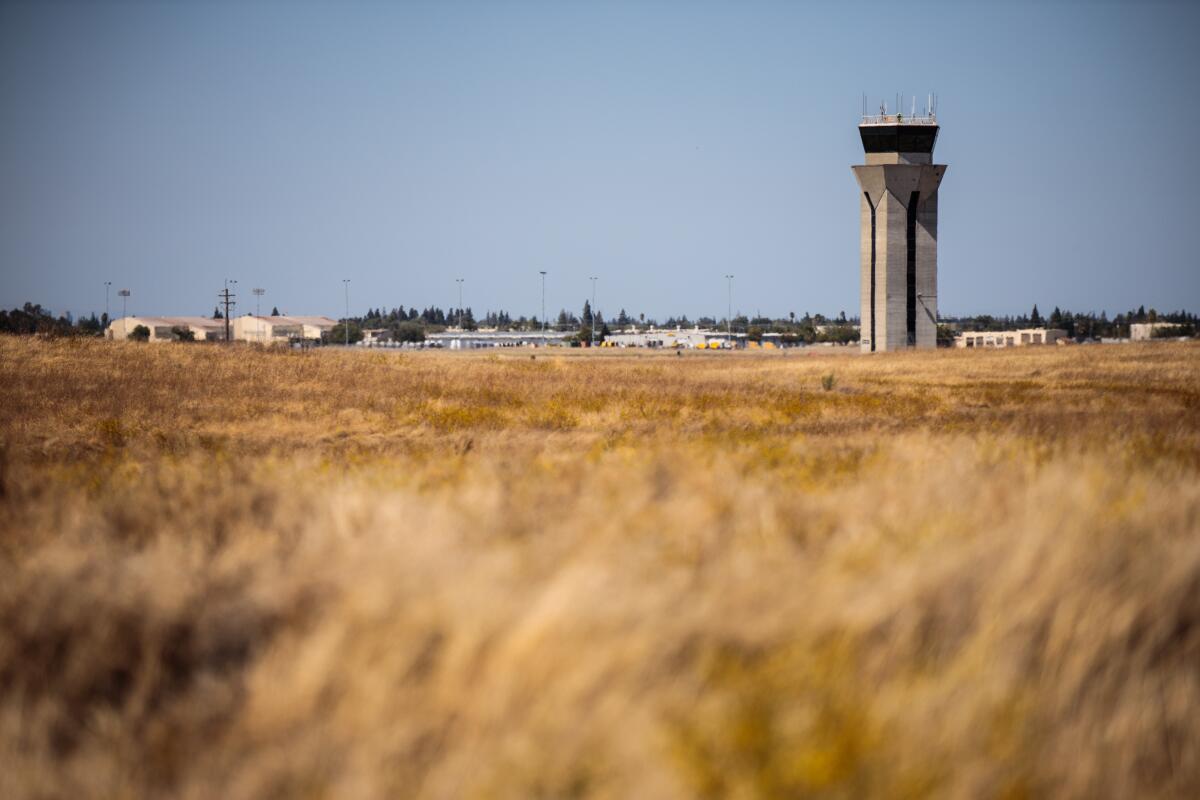
Growing frustration with Pentagon response
In Rancho Cordova, a city of more than 72,000 people just east of Sacramento that abuts the former Mather Air Force Base, a drinking-water well owned by the California American Water Co., one of four utilities that sells water to the town’s residents, has been contaminated.
City Manager Cyrus Abhar said that when the tainted water was discovered, the Air Force assured him it would deal with the problem.
“The Air Force is not going to leave the local communities holding the bag,” Abhar said.
But several years after test results showed high PFAS readings, the Air Force has largely evaded responsibility for removing the contaminant.
Instead, California American Water has spent $1.3 million to build a treatment plant that filters PFAS out of the groundwater. The Air Force has not reimbursed it for this expense, said Evan Jacobs, a California American Water spokesman.
In a statement, the Air Force said, “Congress has provided no authority” to pay for constructing the facility, but that it was in negotiations with the company to pay for its operation costs.
In a sign of growing frustration with the Defense Department, the company has filed a property damage claim against the Air Force — a first step before a lawsuit.
Tim Miller, California American Water’s senior director of water quality, warned regulators at a meeting of the State Water Resources Control Board last spring that the Mather PFAS plume could grow.
“The risk of PFAS contamination continuing to spread in the groundwater basin underneath the city of Rancho Cordova is increasing,” he said.
If no one acted to prevent it, Miller said, the chemicals could leach into five more drinking-water wells within the next five years.
The pollutants have already reached Bethany Slavic Missionary Church, which is housed in a former health club a mile from Mather.
A deep well on the property supplies the Pentecostal church with its drinking water and is used to fill an outdoor swimming pool for baptisms.
Ciuriuc, one of the church’s founders, said he had no idea the Air Force was regularly testing the well for PFAS — or that the tests showed the contaminant level had risen from 14 parts per trillion in 2016 to 50 parts per trillion two years later.
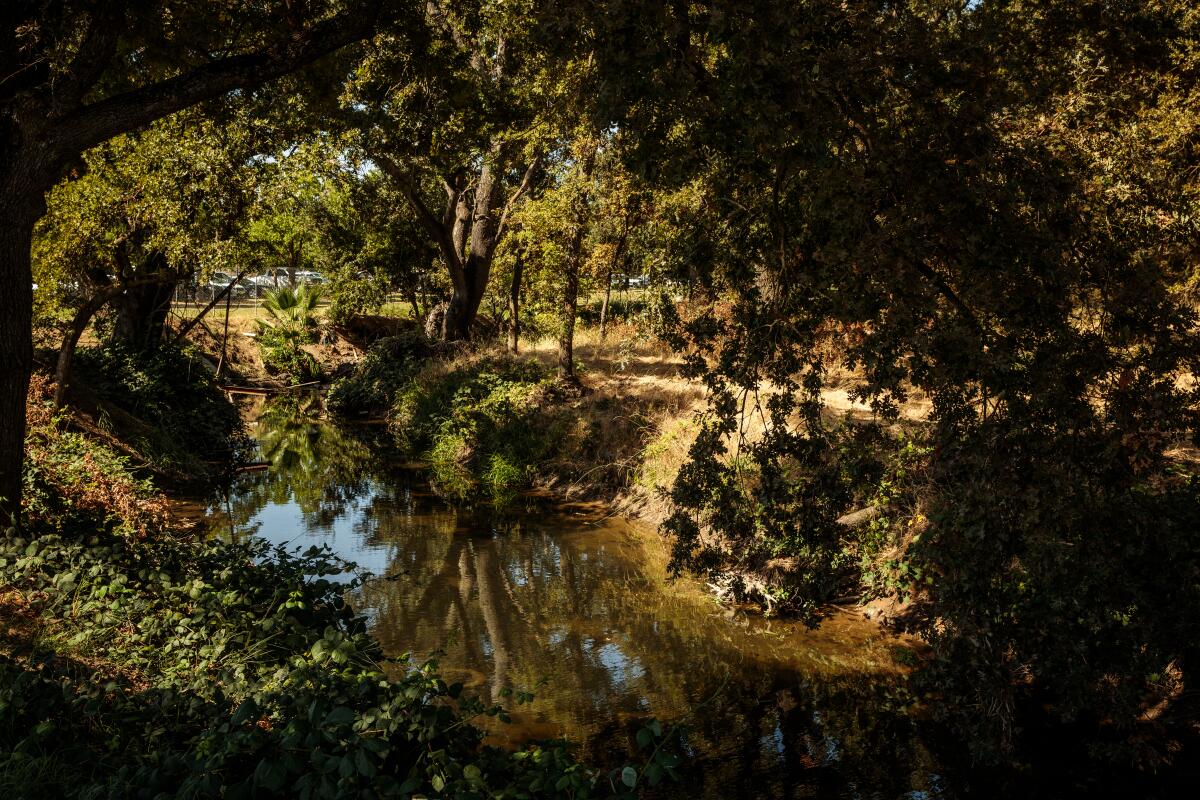
When the well was tested again in March, the chemicals had climbed to 59 parts per trillion, according to a letter disclosing the results the Air Force sent to the church’s pastor, Adam Bondaruk.
“The sample results” are “below the United States Environmental Protection Agency Lifetime Health Advisory level of 70 parts per trillion,” said the letter, a copy of which was provided by the church. “The Air Force is committed to protecting human health and the environment.”
Since the letter made no recommendations to limit use of the well for drinking water, the church initially took no action. When another sample was taken in June, it showed the contaminant level had dropped sharply — back to 16 parts per trillion.
But the church recently started taking precautions, after inquiries from The Times. Ciuriuc stopped taking water every Sunday. Highlands Community Charter School, which leases space from the church, began offering bottled water to its 44 adult students who attend class there.
Last month, church leaders padlocked the well.
More to Read
Get the L.A. Times Politics newsletter
Deeply reported insights into legislation, politics and policy from Sacramento, Washington and beyond. In your inbox three times per week.
You may occasionally receive promotional content from the Los Angeles Times.







